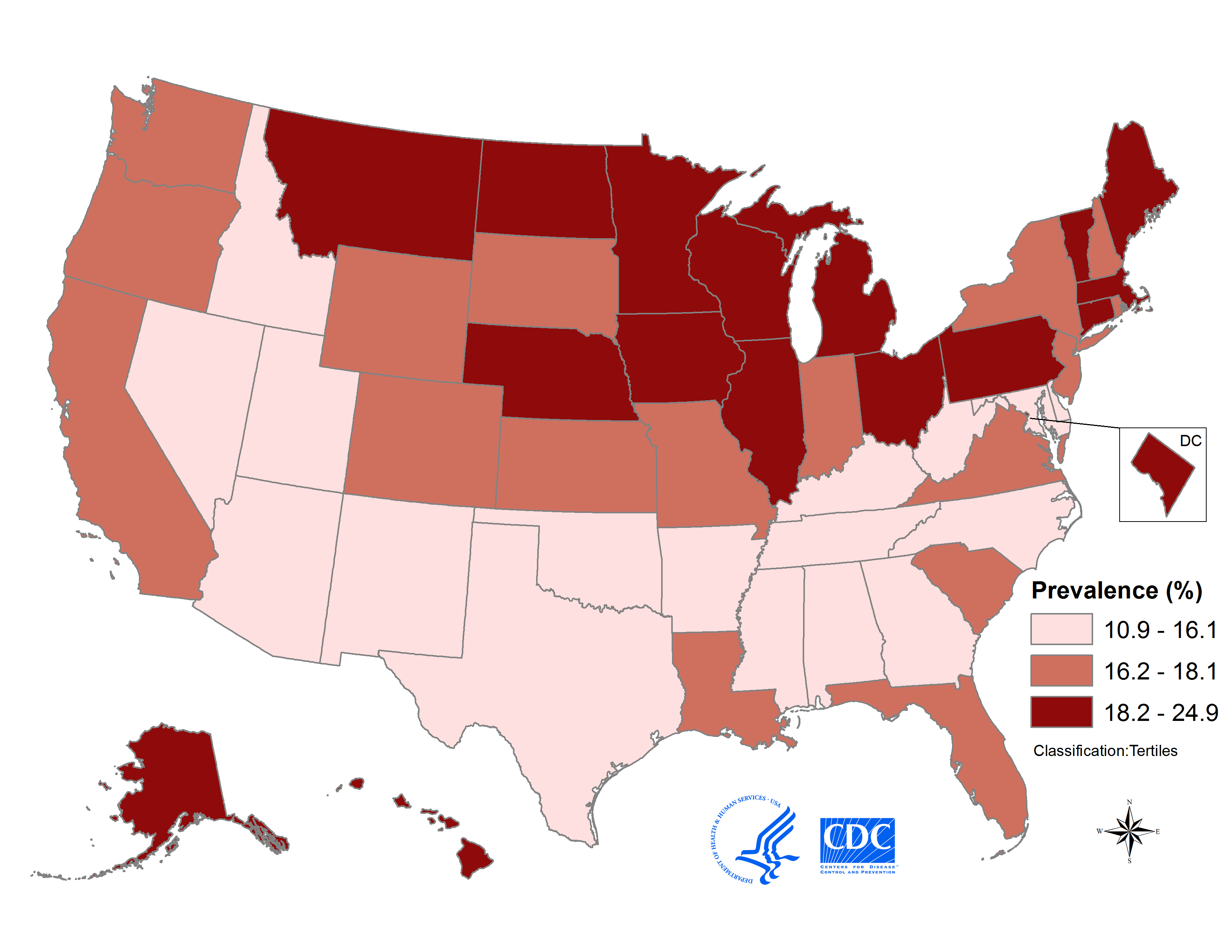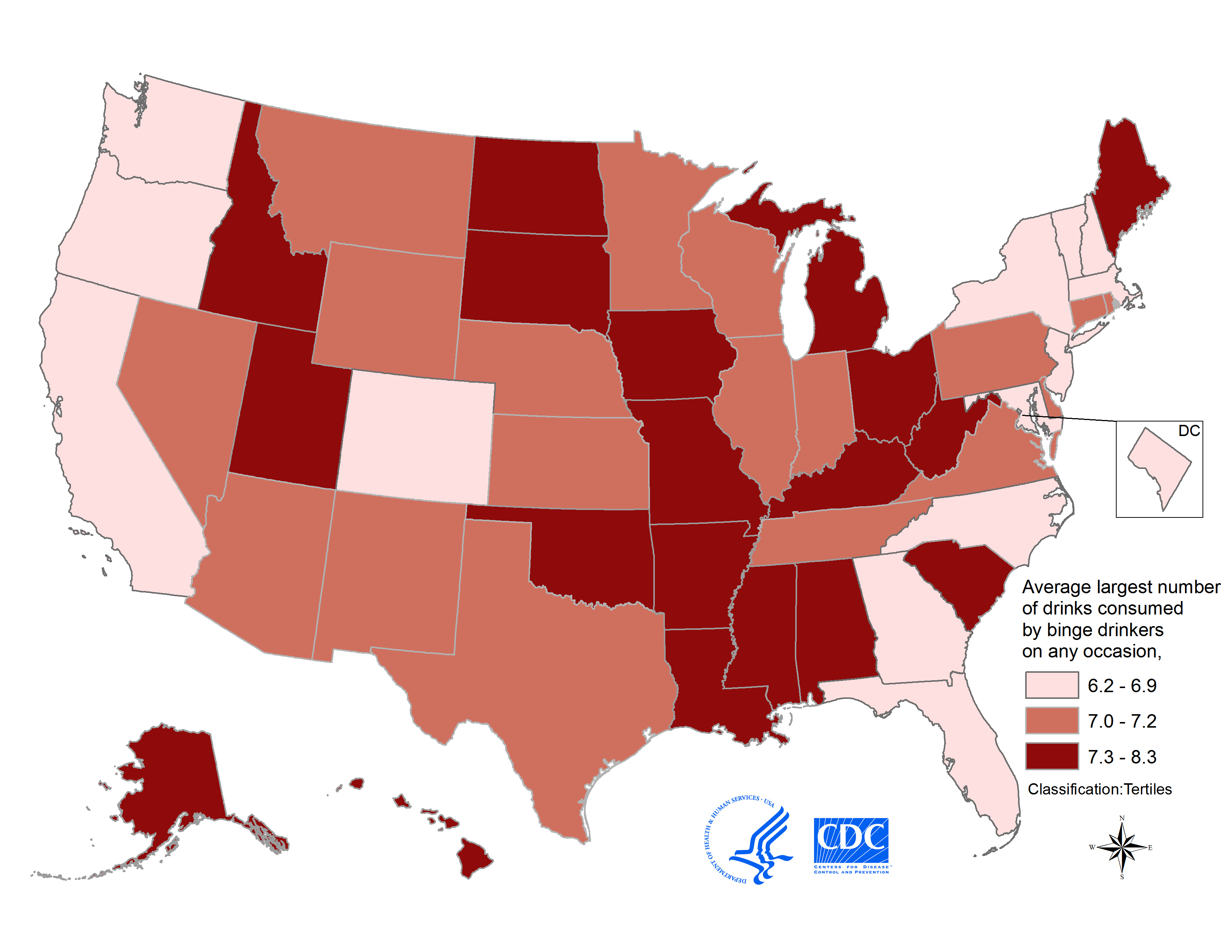Data and Maps
On This Page
Excessive drinking
- Excessive alcohol use, either in the form of binge drinking (drinking 5 or more drinks on an occasion for men or 4 or more drinks on an occasion for women) or heavy drinking (drinking 15 or more drinks per week for men or 8 or more drinks per week for women), is associated with an increased risk of many health problems, such as liver disease and unintentional injuries.
- According to the Behavioral Risk Factor Surveillance System (BRFSS) survey, in 2013, more than half of the US adult population drank alcohol in the past 30 days. About 17% of the adult population reported binge drinking, and 6% reported heavy drinking.
- According to the ARDI application, during 2006–2010, excessive alcohol use was responsible for an annual average of 88,000 deaths, including 1 in 10 deaths among working-age adults aged 20 to 64 years, and 2.5 million years of potential life lost. More than half of these deaths and three-quarters of the years of potential life lost were due to binge drinking.
- Alcohol use poses additional problems for underage drinkers and pregnant women.
Prevalence of Binge Drinking Among US Adults, 2015

Note: Age-adjusted to the 2000 US Census standard population. Binge drinking is defined as 4 or more drinks for a woman or 5 or more drinks for a man on an occasion during the past 30 days.
Source: Behavioral Risk Factor Surveillance System.
[Notes and a text description of this graph is also available.]
Intensity of Binge Drinking Among US Adults, 2015

Note: Age-adjusted to the 2000 US Census standard population. Binge drinking is defined as 4 or more drinks for a woman or 5 or more drinks for a man on an occasion during the past 30 days. Intensity is defined as the average largest number of drinks consumed by binge drinkers on any occasion in the past 30 days.
Source: Behavioral Risk Factor Surveillance System.
[Notes and a text description of this graph is also available.]
Economic costs
- Excessive alcohol consumption cost the United States $249 billion in 2010. This cost amounts to about $2.05 per drink, or about $807 per person.
- Costs due to excessive drinking largely resulted from losses in workplace productivity (72% of the total cost), health care expenses (11%), and other costs due to a combination of criminal justice expenses, motor vehicle crash costs, and property damage.
- Excessive alcohol use cost states and DC a median of $3.5 billion in 2010, ranging from $488 million in North Dakota to $35 billion in California.
- Binge drinking, defined as consuming 4 or more drinks per occasion for women or 5 or more drinks per occasion for men, was responsible for about three-quarters (77%) of the cost of excessive alcohol use in all states and DC.
- About $2 of every $5 of the economic costs of excessive alcohol use were paid by federal, state, and local governments.
Source: Sacks JJ, Gonzales KR, Bouchery EE, Tomedi LE, Brewer RD. 2010 national and state costs of excessive alcohol consumption. Am J Prev Med. 2015;49(5):e73–e79.
- Page last reviewed: June 9, 2017
- Page last updated: June 15, 2017
- Content source:
- Maintained By:


 ShareCompartir
ShareCompartir